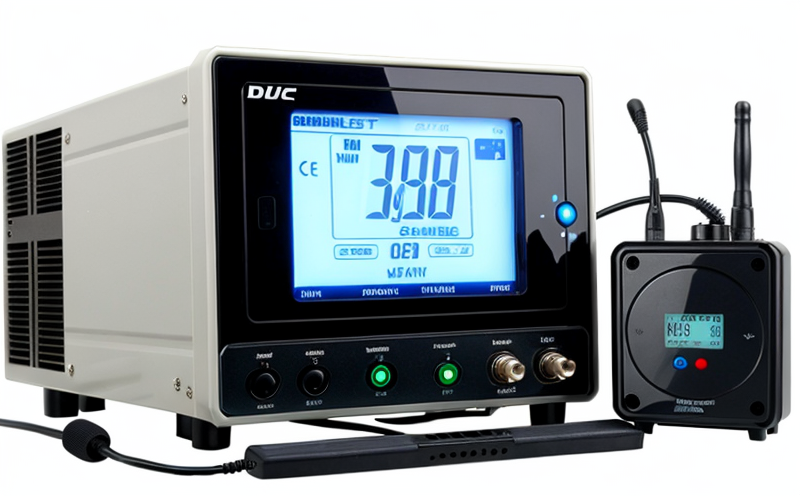3GPP TS 25 141 WCDMA RF Testing
The 3rd Generation Partnership Project (3GPP) Technical Specification 25.141 is a crucial document in the field of wireless communication standards, particularly focusing on Wideband Code Division Multiple Access (WCDMA). This specification defines the interface between the Radio Resource Control (RRC) layer and the Physical Layer (PHY) layer for WCDMA systems operating within the frequency bands 2100 MHz to 2300 MHz. The primary objective of this test is to ensure that devices conforming to these standards meet stringent performance requirements under various operational conditions.
The testing process involves several stages, each designed to evaluate different aspects of a device's compliance with the specified norms. This includes signal strength measurements, frequency stability checks, error vector magnitude (EVM), adjacent channel interference ratio (ACIR), and other key parameters that are critical for effective communication. The accuracy and reliability of these tests are paramount as they directly impact user experience and network performance.
One of the most challenging aspects of 3GPP TS 25.141 testing is ensuring compatibility across diverse environments, which can vary significantly in terms of signal propagation, interference levels, and environmental factors such as temperature and humidity. To address this challenge, laboratories employ sophisticated test equipment capable of simulating real-world conditions, including controlled fading scenarios and multipath environments.
The process begins with thorough preparation of the devices to be tested, which includes software configuration, hardware calibration, and ensuring that all components are functioning optimally. Once prepared, devices undergo rigorous testing using state-of-the-art instruments like vector network analyzers (VNAs), spectrum analyzers, and signal generators. These tools provide precise measurements necessary for evaluating compliance with specified parameters.
During the testing phase, engineers closely monitor various metrics including EVM, ACIR, and adjacent channel power ratio (ACPR). Compliance is determined based on predefined thresholds outlined in 3GPP TS 25.141. Non-compliance can lead to issues such as dropped calls, poor data rates, or even complete failure of devices within the network infrastructure.
After successful completion of individual tests, results are compiled into comprehensive reports detailing all relevant findings and comparisons against specified standards. These reports serve multiple purposes including quality assurance for manufacturers, compliance verification for regulatory bodies, and technical documentation for ongoing research and development activities.
The importance of 3GPP TS 25.141 testing cannot be overstated in today’s interconnected world where seamless communication is essential. By adhering to these stringent standards, manufacturers can ensure their products perform reliably across a wide range of network configurations and user scenarios.
Scope and Methodology
The scope of 3GPP TS 25.141 testing encompasses several critical parameters that define the performance expectations for WCDMA devices operating within specified frequency bands. These include:
- Signal strength and quality
- Frequency stability
- Error vector magnitude (EVM)
- Adjacent channel interference ratio (ACIR)
- Adjacent channel power ratio (ACPR)
The methodology involves detailed procedures for setting up test environments, configuring devices according to standard specifications, and executing tests under controlled conditions. This ensures that all results are accurate and repeatable, providing reliable data for decision-making processes.
Quality and Reliability Assurance
Ensuring high-quality and reliability in 3GPP TS 25.141 testing is essential to meet the stringent demands of wireless communication standards. Quality assurance (QA) measures include:
- Detailed calibration procedures for test equipment
- Regular validation of measurement results against known reference values
- Use of advanced algorithms to detect and correct errors in data transmission
- Continuous monitoring and updating of testing protocols based on emerging industry trends and standards
Reliability assurance (RA) focuses on maintaining consistent performance across all tests, regardless of external factors such as environmental conditions or device variations. This is achieved through rigorous training programs for staff, regular maintenance of equipment, and adherence to best practices in test execution.
Environmental and Sustainability Contributions
The 3GPP TS 25.141 testing process not only ensures robust performance but also contributes positively to environmental sustainability efforts. By promoting the use of energy-efficient devices, reducing waste through effective recycling programs, and minimizing carbon footprints associated with manufacturing processes, this service plays a vital role in fostering eco-friendly practices within the industry.
Additionally, laboratories engaged in such testing contribute valuable insights into improving future generations of wireless communication technologies. This knowledge helps drive innovations that reduce energy consumption while enhancing connectivity and reliability across global networks.





